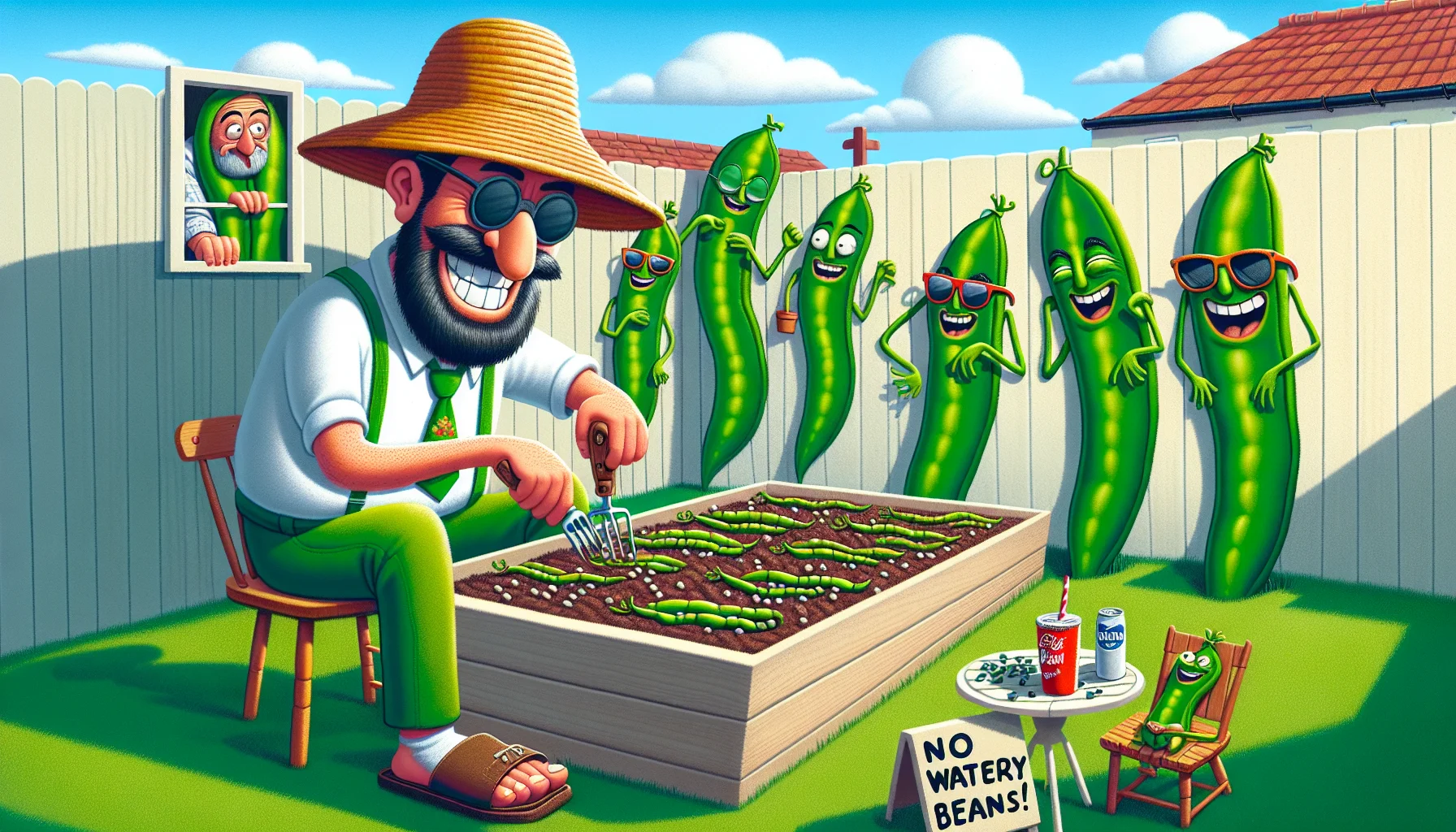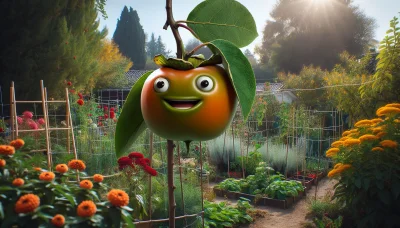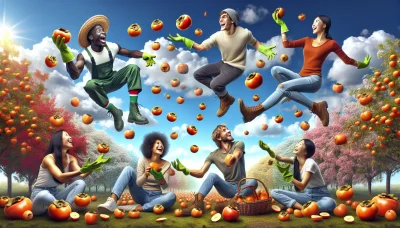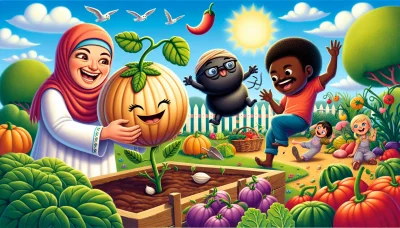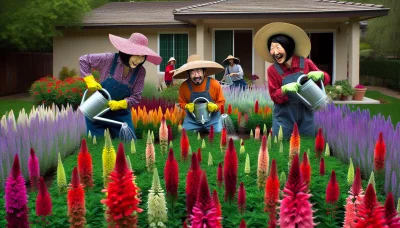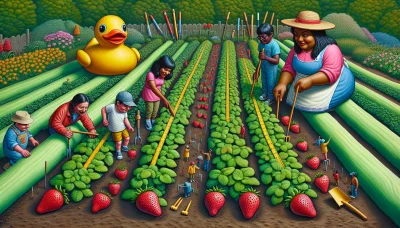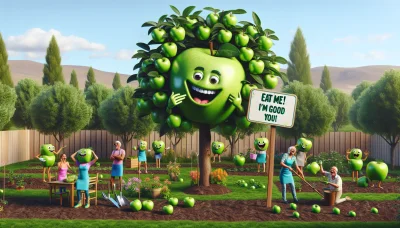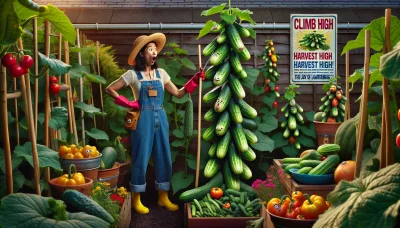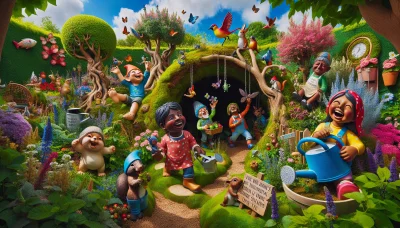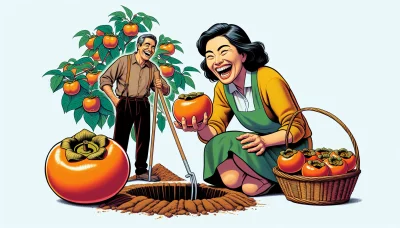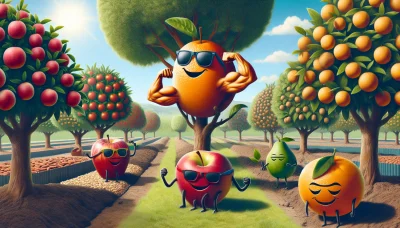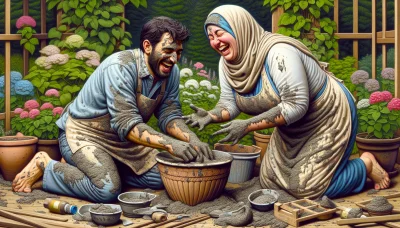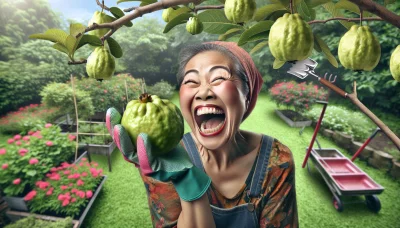How to grow green beans Quiz
Test Your Knowledge
Question of
How to Grow Green Beans: A Beginner's Guide
Green beans are a staple in many home gardens, beloved for their simple cultivation and delicious output. As a beginner, you'll find green beans to be an encouraging crop due to their hardiness and relatively low maintenance needs. To start, choose a sunny spot in your garden as green beans thrive in direct sunlight. Prepare the soil with organic matter to ensure good drainage and nutrient content. Plant the seeds about an inch deep and a few inches apart after the last frost to avoid any cold damage. Regular watering, especially once the plants start flowering, will promote a bountiful harvest. With their fast growth, you'll enjoy the fruits of your labor in no time, making green beans a popular choice among home gardeners for both their ease and productivity.
Choosing the Right Variety
When it comes to growing green beans, gardeners have two primary types to choose from: bush beans and pole beans. Each variety has its own set of advantages, making it important to select the one that best suits your gardening needs. Bush beans are known for their compact growth, making them an excellent choice for gardeners with limited space. They tend to produce a quick, bountiful harvest, usually all at once, which is perfect for those looking to can or freeze their produce. On the other hand, pole beans require more vertical space to grow, as they climb supports such as trellises or poles. They take a bit longer to start producing but will give you a steady supply of beans throughout the growing season. When deciding between bush and pole beans, consider factors such as your garden space, how you plan to use the beans, and your preference for a single large harvest versus a continuous yield.
Planting Green Beans
- Choose the Right Time: Plant green beans in spring, once the danger of frost has passed and the soil has warmed up to at least 48°F (9°C).
- Soil Preparation: Prepare your garden bed by loosening the soil to a depth of at least 8 inches. Mix in compost or well-rotted manure to enrich the soil.
- Planting Depth: Plant the seeds 1 inch deep in the soil.
- Spacing: Space the seeds 2 inches apart in rows. Rows should be spaced 18 to 24 inches apart.
- Watering: After planting, water the soil gently but thoroughly to moisten the soil around the seeds.
- Thinning: Once the seedlings emerge and grow to a few inches tall, thin them so they are 6 inches apart. This ensures that each plant has enough space to grow.
- Supporting: If you are planting pole beans, provide a trellis or stakes for the vines to climb on as they grow.
- Mulching: Apply a layer of mulch around the plants to help retain moisture, suppress weeds, and keep the soil temperature stable.
- Regular Watering: Keep the soil consistently moist, especially once the plants start flowering and developing beans.
- Harvesting: Begin harvesting green beans when they are firm and have reached their full size but before the seeds inside have bulged. They are usually ready about 50 to 60 days after planting.
Caring for Your Green Bean Plants
Watering, weeding, and mulching are critical for the health and productivity of your green bean plants. Regular watering ensures the plants receive the moisture they need to grow strong and produce bountiful beans. Weeding is essential to remove competition for nutrients and water, allowing your green beans to thrive. Mulching helps retain soil moisture, suppress weeds, and keep the soil temperature regulated. Together, these practices create an optimal growing environment for your green beans.
- Inspect plants regularly for signs of pests and diseases.
- Use insecticidal soap or neem oil to manage aphids and spider mites.
- Remove and destroy infected plants to prevent the spread of diseases.
- Encourage beneficial insects, like ladybugs, that prey on harmful pests.
- Practice crop rotation to reduce soil-borne diseases and pest buildup.
Harvesting and Storing Green Beans
Knowing when green beans are ready to harvest is crucial for getting the best flavor and texture from your garden. Look for beans that are firm, have reached their full size, but are still tender. The pods should snap easily when bent. The best method for harvesting is to gently hold the stem with one hand and the bean with the other, then carefully pull or snap the bean off to avoid damaging the plant. It's important to harvest regularly to encourage more production.
- After harvesting, wash the beans in cold water to remove any dirt.
- Pat them dry with a clean cloth or paper towel to remove excess moisture.
- Place the beans in a plastic bag or container, but do not seal it completely to allow for some air circulation.
- Store the beans in the crisper drawer of your refrigerator to keep them fresh.
- For longer storage, blanch the beans for three minutes, cool them in ice water, drain, and freeze in airtight containers.
Common Problems and Solutions
Gardeners often encounter several challenges when growing green beans, ranging from pest invasions to environmental stresses. These problems can significantly affect the yield and health of the green beans, making it crucial for gardeners to identify and address them promptly. Understanding the common issues and implementing the right solutions can lead to a bountiful and healthy harvest.
- Pests: Common pests like aphids and spider mites can damage green beans. Solution: Regularly inspect plants and use organic pesticides or introduce beneficial insects like ladybugs.
- Diseases: Fungal diseases such as powdery mildew and rust can affect the plants. Solution: Ensure proper air circulation by spacing plants correctly and apply fungicides when necessary.
- Environmental Stress: Extreme temperatures and inadequate water can stress plants. Solution: Use mulch to retain soil moisture and provide shade during the hottest part of the day to protect plants.
- Nutrient Deficiencies: Yellowing leaves may indicate a lack of essential nutrients. Solution: Conduct a soil test and supplement with the appropriate fertilizers.
- Poor Pollination: Sometimes green beans have difficulty setting fruit. Solution: Encourage pollinators by planting flowers nearby or gently shaking the plants to disperse pollen.
Benefits of Growing Green Beans
Green beans are not only a versatile and delicious addition to any meal, but they also offer numerous health and environmental benefits. Nutritionally, green beans are packed with vitamins and minerals, including Vitamin C, dietary fiber, folate, and potassium, making them an excellent choice for maintaining a healthy diet. Environmentally, green beans are relatively easy to grow and can improve soil health by fixing nitrogen levels, reducing the need for chemical fertilizers. Additionally, the act of growing your own food can be incredibly rewarding, offering a sense of accomplishment, reducing grocery bills, and providing the freshest produce possible right from your backyard.
| Vegetable | Calories (per 100g) | Vitamin C (mg) | Dietary Fiber (g) | Potassium (mg) |
|---|---|---|---|---|
| Green Beans | 31 | 12.2 | 2.7 | 211 |
| Carrots | 41 | 5.9 | 2.8 | 320 |
| Tomatoes | 18 | 13.7 | 1.2 | 237 |
| Broccoli | 34 | 89.2 | 2.6 | 316 |
